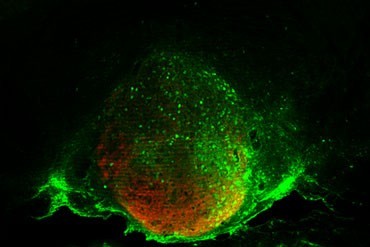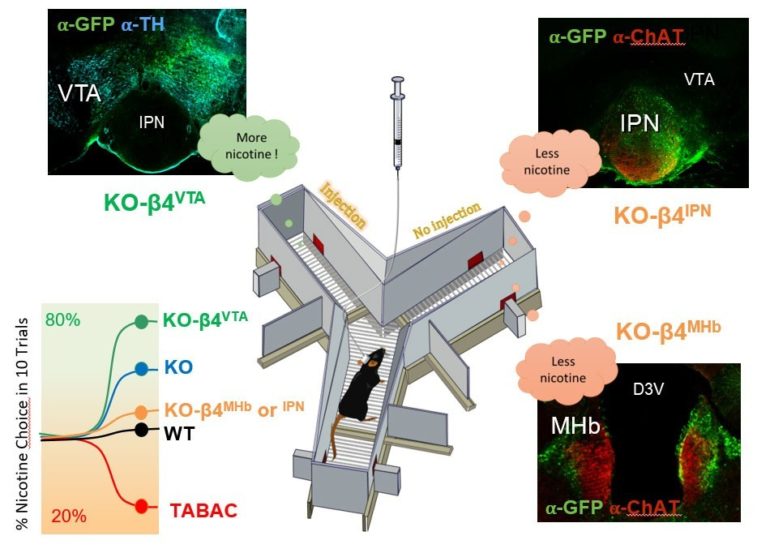
Vincent David et al in Journal of Neuroscience
Nicotine addiction, through smoking, is the principal cause of preventable mortality worldwide. Human genome-wide association studies have linked polymorphisms in the CHRNA5-CHRNA3-CHRNB4 gene cluster, coding for the a5, a3, and b4 nicotinic acetylcholine receptor (nAChR) subunits, to nicotine addiction. b4*nAChRs have been implicated in nicotine withdrawal, aversion, and reinforcement. Here we show that b4*nAChRs also are involved in non-nicotine mediated responses that may predispose to addiction-related behaviors. b4 knock-out (KO) male mice show increased novelty-induced locomotor activity, lower baseline anxiety, and motivational deficits in operant conditioning for palatable food rewards and in reward-based Go/No-go tasks. To further explore reward deficits we used intracranial self-administration (ICSA) by injecting nicotine directly into the ventral tegmental area (VTA) in mice. We found that, at low nicotine doses, b4KO self-administer less than wild-type (WT) mice. Conversely, at high nicotine doses, this was reversed and b4KO self-administered more than WT mice, whereas b4-overexpressing mice avoided nicotine injections. Viral expression of b4 subunits in medial habenula (MHb), interpeduncular nucleus (IPN), and VTA of b4KO mice revealed dose- and region- dependent differences: b4*nAChRs in the VTA potentiated nicotine-mediated rewarding effects at all doses, whereas b4*nAChRs in the MHb-IPN pathway limited VTA-ICSA at high nicotine doses. Together, our findings indicate that the lack of functional b4*nAChRs result in deficits in reward sensitivity including increased ICSA at high doses of nicotine. Normal, WT levels of nicotine ICSA are restored by re-expression of b4*nAChRs in the MHb-IPN. These data indicate that the b4 subunit is a critical modulator of reward-related behaviors, and that β4*nAChRs may provide a promising novel drug target for smoking cessation.

Reference
Husson M, Harrington L, Tochon L, Cho Y, Ibañez-Tallon I, Maskos U, David V.
β4-Nicotinic Receptors Are Critically Involved in Reward-Related Behaviors and Self-Regulation of Nicotine Reinforcement.
J Neurosci. 2020 Apr 22;40(17):3465-3477.
doi: 10.1523/JNEUROSCI.0356-19.2020.
F1000 recommendation
This article was recently awarded with a F1000 recommendation for exceptional importance:
Read the F1000 recommendation for this paper here.
Last update 23/07/20
